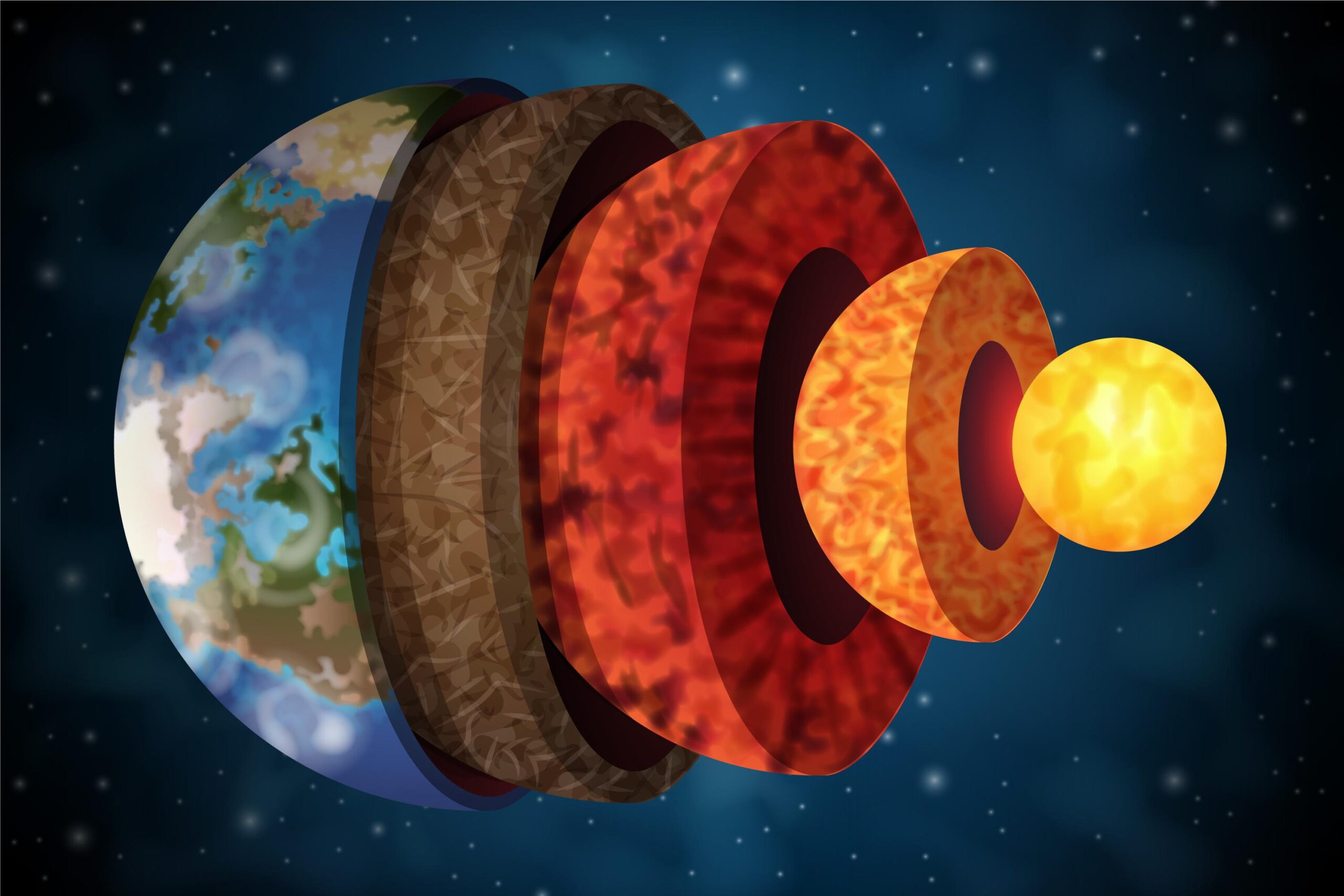Introduction to Geology: Earth’s Formation and Processes

Understanding Geology: Unraveling Earth’s Mysteries1.1 The Importance of Geology
Geology is the scientific study of the Earth, its composition, structure, processes, and history. It plays a crucial role in understanding the planet we inhabit and its dynamic nature. From the Earth billions of years ago to the ongoing geological processes shaping its surface today, geology unravels the mysteries surrounding us.
1.2 Studying Earth’s History
Geologists use various methods, such as radiometric dating, stratigraphy, and paleontology, to decipher Earth’s history. By examining rocks, fossils, and other geological features, they reconstruct the events that shaped our planet over billions of years. This knowledge deepens our understanding of Earth’s past and helps predict its future changes.
1.3 Earth’s Formation: A Cosmic Journey
The story of Earth’s formation began approximately 4.6 billion years ago within the vastness of the cosmos. Our solar system was born in a swirling cloud of gas and dust. Over time, gravity caused this nebula to collapse, leading to the formation of the protostellar disk. Eventually, the central mass accumulated to become the Sun, and the remaining debris coalesced into planets, including Earth.
- Earth’s Formation: From Dust to a Dynamic Planet
2.1 Accretion and Differentiation
As the dust and debris in the protostellar disk clumped together, they underwent a process called accretion. Particles collided and stuck together, forming planetesimals, which grew into protoplanets. During this period, the heat generated by the intense impacts led to the differentiation of Earth’s layers based on density. This process eventually gave rise to the distinct layers we know today – the core, mantle, and crust.
2.2 Early Earth: A Hostile Environment
In its early years, Earth was a hostile and inhospitable place. Intense volcanic activity, frequent asteroid impacts, and a thin atmosphere comprised mostly of carbon dioxide and water vapor made life as we know it impossible. However, as the planet cooled down, water vapor in the atmosphere condensed to form oceans, setting the stage for the emergence of life.
- Geological Processes: Shaping Earth’s Landscape
3.1 Plate Tectonics: The Dance of the Lithosphere
Plate tectonics is one of the most significant geological processes shaping Earth’s surface. The lithosphere, which comprises the Earth’s rigid outer shell, is divided into several large and small tectonic plates that float atop the semi-fluid asthenosphere. These plates are in constant motion due to the heat-driven convection currents in the mantle. As they interact, they give rise to various geological features such as mountains, earthquakes, and volcanic activity.
3.1.1 Types of Plate Boundaries
- Divergent Boundaries: At divergent boundaries, tectonic plates move apart. This movement allows magma to rise from the mantle and solidify, creating a new oceanic crust. The mid-Atlantic ridge is a classic example of a divergent boundary.
- Convergent Boundaries: Convergent boundaries are where plates collide. Depending on the type of plates involved, this can lead to subduction (one vessel descending beneath another) or mountain-building processes. The Himalayas result from the collision between the Indian and Eurasian plates.
- Transform Boundaries: Transform boundaries occur when plates slide horizontally past each other. The friction between the plates can cause earthquakes. The San Andreas Fault in California is a well-known transform boundary.
3.2 Weathering and Erosion: Sculpting the Earth’s Surface
Weathering and erosion are geological processes that continuously shape the Earth’s landscape. Weathering refers to breaking rocks into smaller particles due to physical, chemical, or biological factors. Conversely, erosion involves transporting and depositing these weathered materials by agents such as wind, water, ice, or gravity.
3.2.1 Types of Weathering
- Mechanical Weathering: Also known as physical weathering, this process involves the biological breakdown of rocks without changing their chemical composition. Frost wedging, thermal expansion, and abrasion are common forms of mechanical weathering.
- Chemical Weathering: Chemical weathering occurs when rocks are broken down through chemical reactions, altering their mineral composition. Carbonation, oxidation, and hydrolysis are examples of chemical weathering processes.
- Biological Weathering: Biological weathering involves the breakdown of rocks by living organisms such as plants and burrowing animals. Their activities can weaken rocks and facilitate other forms of weathering.
3.3 The Power of Water: Rivers and Caves
Water is a potent geological agent that profoundly impacts the Earth’s surface. Over millions of years, rivers carve out vast valleys and canyons, shaping the landscape through erosion. Meanwhile, groundwater can dissolve limestone and other soluble rocks, creating intricate cave systems filled with stunning stalactites and stalagmites.
3.3.1 Formation of Caves
Caves are formed through a process known as speleogenesis. Rainwater, slightly acidic due to dissolved carbon dioxide, infiltrates the ground and dissolves the limestone. Over time, this creates networks of underground passages and chambers that make up cave systems.
3.3.2 Speleothems: Nature’s Underground Sculptures
Speleothems are mineral deposits within caves as water drips or flows through them. The two most common types of speleothems are stalactites, which hang from cave ceilings, and stalagmites, which grow up from the cave floor. These formations take thousands of years to develop and add to the breathtaking beauty of caves.
- Geology and Human Civilization
4.1 Geological Resources: A Foundation for Civilization
Geology plays a crucial role in providing essential resources for human civilization. Earth’s geological resources are the backbone of human progress, from minerals and metals used in construction and manufacturing to fossil fuels that power our modern societies.
4.2 Hazards and Mitigation: Understanding and Preparing for Disasters
While geology provides valuable resources, it poses particular hazards to human populations. Volcanic eruptions, earthquakes, landslides, and tsunamis are among the geological events that can have devastating consequences. Geologists play a vital role in studying these hazards, understanding their triggers, and devising strategies for mitigation and preparedness.
- The Future of Geology: Unveiling Earth’s Mysteries
5.1 Technological Advancements: Peering Deeper into the Earth
As technology advances, geologists gain access to powerful tools and techniques that allow them to explore Earth’s mysteries with unprecedented detail. Seismic imaging, satellite remote sensing, and advanced laboratory analyses provide valuable insights into the planet’s internal structures and processes.
5.2 Addressing Environmental Challenges
In the face of climate change and environmental degradation, geologists play a vital role in studying Earth’s past climates and ecosystems. This knowledge helps us comprehend the implications of current human activities on the planet and devise sustainable solutions to protect the environment for future generations.
Conclusion: Unraveling Earth’s Geologic Tale
Geology remains a fascinating and essential field of study, providing invaluable information about the formation of our planet and the ongoing processes that shape it. From the cosmic journey that gave rise to Earth to the geological forces shaping its landscape, the intricate story of our planet continues to captivate scientists and curious minds alike. As technology and research progress, we can expect to unveil more of Earth’s mysteries and address pressing environmental challenges with the knowledge provided by geology.
So, whether you’re a student looking to delve into the wonders of geology or simply curious about the planet we call home, exploring the depths of Earth’s geological history will be an engaging and enlightening journey.Disclaimer: The information provided in this article is for educational and informational purposes only. Always consult reputable sources or experts in the field for specific geological studies or inquiries. For students seeking comprehensive and organic answers to their geological queries, “studen” is a website that provides valuable insights into geology.




